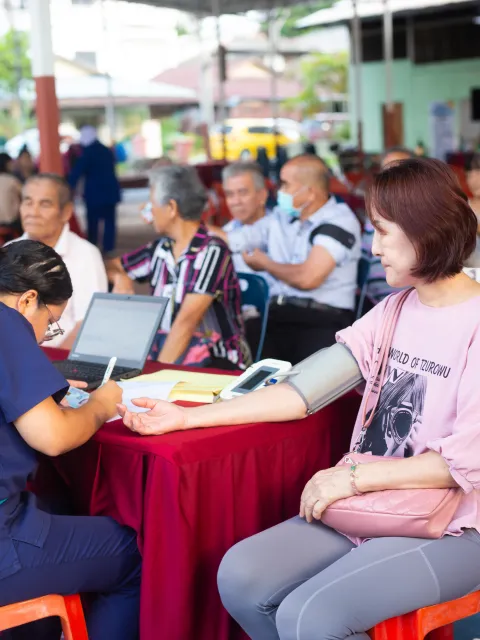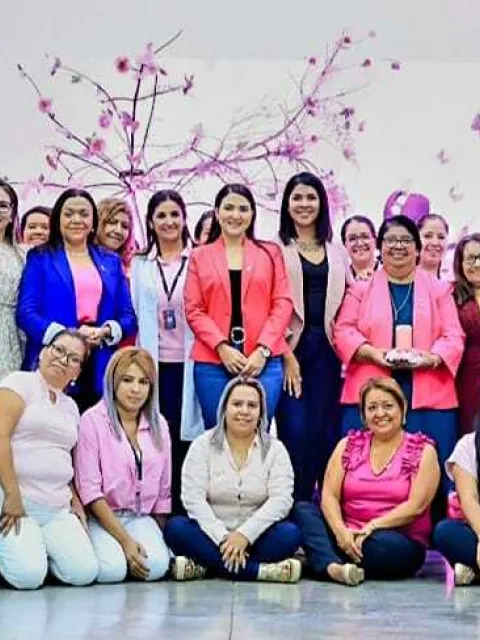Disruption in Cancer Care: Good or Bad… What’s next?

Danny Milner looks at the positive as well as negative connotations associated with the term "disruption", and what recent innovations in cancer care mean for oncology, the cancer patient journey and making care available to otherwise hard-to-reach populations.
The concept of disruption often has negative connotations. Everyone on the planet can understand the phrase, “COVID-19 has disrupted our lives” without explanation. Although this disruption has been global, the disruption and ensuing impact this has had on non-COVID-19 related healthcare and, specifically, oncology, have been dramatic.
Surgeries, chemotherapy and other medical treatments were canceled or delayed by months, and volumes of testing across the cancer landscape dropped to minimums. Existing infrastructure furthered the deployment of telehealth consultations and, eventually, clinics were reopened; however, there is no question that many people with cancer face being diagnosed at a more advanced stage of disease, with worse outcomes.
On 25-26 October, the World Cancer Leaders’ Summit, organised by the Union for International Cancer Control and hosted by the American Society for Clinical Pathology, brought together more than 600 leaders from some 100 countries. One of the major topics of discussion was, “What do we do for oncology after COVID-19?”
In addition to examining heart-wrenching data on disruptions to cancer services, there were also positive discussions about what we have learned from this pandemic, how we have adapted, and what novel approaches we should keep that could create optimal, more efficient, or more impactful cancer care.
The positive side of disruption
When applied to innovative technologies or ways of thinking, “disruption” can be positive, particularly when we consider the many advancements happening so quickly with treatments, including immunotherapies like check-point inhibitors, mRNA cancer vaccines, CAR-T therapy, epigenetic therapies, that the different members of the cancer community are often running to catch up.
Some of these advances are simply operational efficiency (i.e., getting more output from the system by improving the inputs and the usage) while many are transformative innovations (i.e., immunotherapy for lung cancer and melanoma). And some advances are considered “disruptive” because they are not just a new way of doing something better but allow an entirely new approach that previously wasn’t available and that radically improves prevention, diagnosis, treatment or supportive care.
A disruptive revolution in cancer detection
In oncology, a true disruptive innovation is taking place with universal cancer screening (UCS) or multi-cancer early detection (MCED). The earlier a cancer is detected and the patient can start treatment, the higher the chance of survival. The current paradigm for cancer care is suspicion of cancer leads to diagnosis, which leads to treatment. Suspicion rests in either the results of a screening test or when a person shows symptoms, and diagnosis involves a biopsy that must be analysed.
Primary care doctors and not just oncologists will be able to use UCS and MCED testing platforms. Tests will be performed on a timescale (e.g., annually, every five years) relevant to the person’s age, medical and family history as well as the type of cancer being detected for, rather than wait for a patient to present with symptoms. Furthermore, these platforms will be able to detect 20 to 50 or more cancers from a single sample and for myriad cancer stages, including precursor or pre-invasive cancer, and there is no need for a separate diagnostics phase: the result itself would dictate a treatment because the UCS/MCED platforms not only detect the cancer but can, in theory, give an origin and medical response parameters.
Whereas the current paradigm involves primary care, oncology, surgery, radiology, pathology, nursing, etc., this new paradigm would only involve primary care and an insurance provider.
Innovating, Creating and Breaking Down Barriers
The transition from traditional oncology to such novel platforms – as with all disruptive technologies – will not be smooth as we are talking about entire businesses and careers connected to traditional oncology possibly become obsolete. People with cancer, however, are expected to have shorter, more efficient journeys, likely with better outcomes and at a lower cost.
In LMICs, where oncology care systems are not nearly as developed as in HICs and where governments, unlike the US, are generally assumed or expected to pay for cancer services, UCS/MCED will require fewer dollars and provide better results than investing in the infrastructure required to create traditional cancer care systems. If this theoretical framework (UCS/MCED for cancer) does demonstrate the value in promises, it would set the stage for similar paradigms in other non-communicable diseases for which infrastructure and resources in LMICs are often lacking.
UCS/MCED was a hot topic at the WCLS. The leaders that were involved in the meeting sit on either side of a fence with regards to this innovation. There are those that support this technology’s development as quickly as possible, anticipating better patient outcomes, more efficient systems, less healthcare spending and more revenue. There are also opponents to this innovation, who throw up barriers resulting from fear of losses (revenue, employment, testing volume, referral networks, etc.).
The barriers they present, however, are important only if they are true barriers and not just perceived barriers. Why? True barriers are likely to require the engagement of the traditional oncology system to overcome; yet the act of overcoming those barriers may herald the disruptive innovation they fear. When an existing system must participate in its own creative destruction, can such a disruptive innovation take place?
No doubt the participants of the WCLS will continue to ask this question and let’s hope they find some answers for the sake of our patients.
Last update
Tuesday 28 February 2023Share this page


